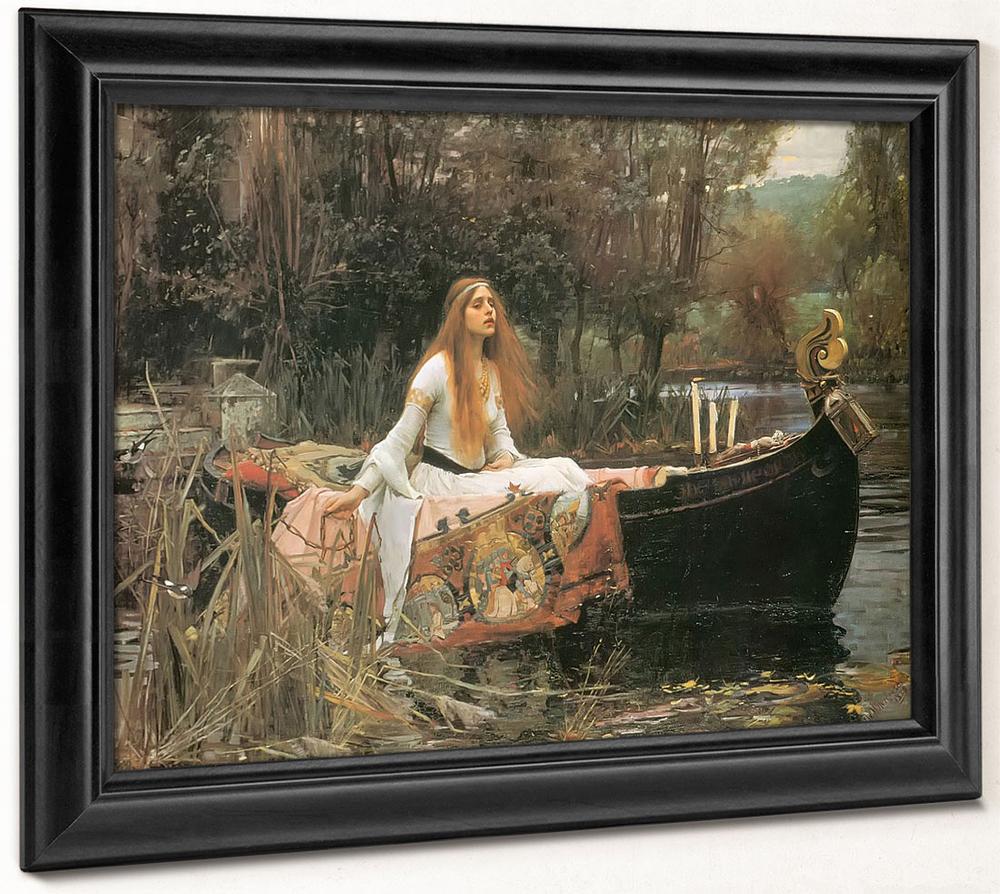John William Waterhouse Biography
•Posted on May 20 2019

John William Waterhouse was a renowned painter of historical and classical works and a scholar. Born in 1849 to British parents, he grew up to become famous for his paintings that represented the pre-Raphaelite era, where the pre-Raphaelite brotherhood (who he later became a part of before it dissolved) was infamous for shaking the perception and nature of art in the mid-nineteenth century.
The exact date when John was born is not known, but some historians speculate that it may have been between 1st and 23rd of January, 1849. Incidentally, the pre-Raphaelite brotherhood was founded in this year by William Holman Hunt, John Everett Millais, and Dante Gabriel Rossetti. John was born in Rome, Italy to William and Isabella Waterhouse who were painters as well. He was baptized on April 6th 1849, and many historians record this as his birth date. His parents encouraged him early on in his childhood to start painting, which he did through sketching artwork that he found in galleries and museums. He grew up being fondly referred to as “Nino” and this nickname stuck even to his adulthood life.
The Waterhouses later left Rome and returned to England in 1854. His artwork on ancient Rome and Roman mythologies was attributed to his childhood days growing up in Italy. In England, 1871, John was enrolled at the Royal Academy of Art School where he started out by studying sculpturing but later switched to painting.
He was married to one Esther Kenworthy in 1883, and they had two children. Esther was the daughter of a well-known arts schoolmaster in Ealing, and she was also a painter with her art being displayed in Royal Academy where John had schooled. John and Esther later took up residence in Primrose Hill. It is unfortunate that the children did not grow past their early infancy days but passed on. Esther would go on to outlive her husband, dying in the year 1944 at a nursing home.
His early paintings like sleep and his half brother death after the dance were largely presented in Dudley Gallery, Society of British Artists and the Royal Academy exhibition. These early on works brought on his success and due to this success, his painting grew larger in size. In the 1880’s he showcased his work in the Grosvenor gallery and also across England in Birmingham, Manchester, and Liverpool. During this period, John’s paintings gained popularity abroad and became part of the international symbolist movement.
John’s canvases were mostly oil paintings, but that did not stop him from being elected to the Royal Institute of painters in watercolor in the year 1883. He would continue here until his resignation in 1889. He became a full academic in 1895 after being an associate in Royal Academy from 1895. John submitted one of his masterpieces, the Ophelia, in 1888 to Royal Academy to receive his diploma. The plan initially was to relinquish the Mermaid piece instead, but at that time he hadn’t completed it. He repainted Ophelia in 1894 and 1909 but his illness struck and he couldn’t complete the series called Ophelia in the churchyard. Another favorite work of art was the painting of the Lady of Shalott depicting the life of Elaine of Astolat. He painted this masterpiece in three different versions in 1888, 1894 and 1916. In the 20th century, he became a member of the pre-Raphaelites and his paintings portrayed the brotherhoods beliefs.
John William had a successful career in the arts and academia and even contributed to theatrical performances. He did a total of 118 paintings throughout his life that is proudly displayed in museums and galleries like the Lady Lever gallery and in the collections of Lord Lloyd Webber. Very little is known about the models who posed for his work but a letter that survived his era is said to name Mary Lloyd, the model for Lord Leighton had modeled for Waterhouse. Angelo Colorossi, an Italian male model who sat for famous Victorian artists like Watts, Millais, Leighton, and Sargent also posed for John. Waterhouse died February 10, 1917 from cancer and is buried alongside his wife in Kensal Green Cemetery in north London.
Visit our John Waterhouse Gallery.
Comments
0 Comments
Leave a Comment